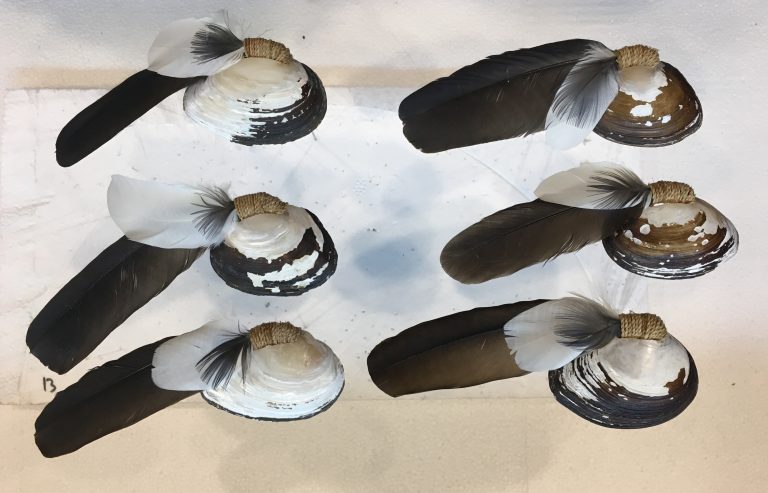We acknowledge the Traditional Owners of the land on which the Queensland Art Gallery | Gallery of Modern Art stands and recognise the creative contribution First Australians make to the art and culture of this country.

Jonathan Jones / Wiradjuri/Kamilaroi peoples / Australia b.1978 / with Dr Uncle Stan Grant Snr am / Wiradjuri people / Australia b.1940 / untitled (giran) (detail) 2018 / Bindu-gaany (freshwater mussel shell), gabudha (rush), gawurra (feathers), marrung dinawan (emu egg), walung (stone), wambuwung dhabal (kangaroo bone), wayu (string), wiiny (wood) / 48-channel soundscape / Installed dimensions variable / Sound design: Luke Mynott, Sonar Sound / © The artists
Jonathan Jonesuntitled (giran) 2018
Not Currently on Display
In the Wiradjuri language, some stories tell of six winds — three male winds and three female winds. Each wind has its own role to play, such as signalling the changing seasons or communicating messages or ideas.
Jonathan Jones’s artwork is made up of around 2000 small sculptures based on traditional tools. Six types of traditional tools have been made from six core materials collected from around Narrandera, in southern New South Wales. Arranged on the wall, the tools map the currents of the wind. Each small sculpture has feathers attached, making the tools seem like flocks of birds flying with the wind currents.
Jonathan Jones incorporates Aboriginal practices, relationships and ideas in his work, especially those of his Wiradjuri people, and he often collaborates with local Indigenous communities on his projects. He is well known for his minimalist light installations, which have, at times, been inspired by woven nets.
Discussion Questions
1. What is a murmuration of birds? Watch a video showing a murmuration of budgerigars in Central Australia. View animated wind maps online. Compare the patterns and lines of the wind direction maps with the movement of the budgerigars.
2. Think about the significance of the number 6 and the way the artist has selected his materials. What is the relationship between the materials, tools and the stories of wind?
Activities
Create a collaborative installation using found objects that you have collected from your school grounds or local area. Attach new or unrelated materials to the objects to create new meanings. Make an arrangement of the objects and use repetition to create patterns and movement.